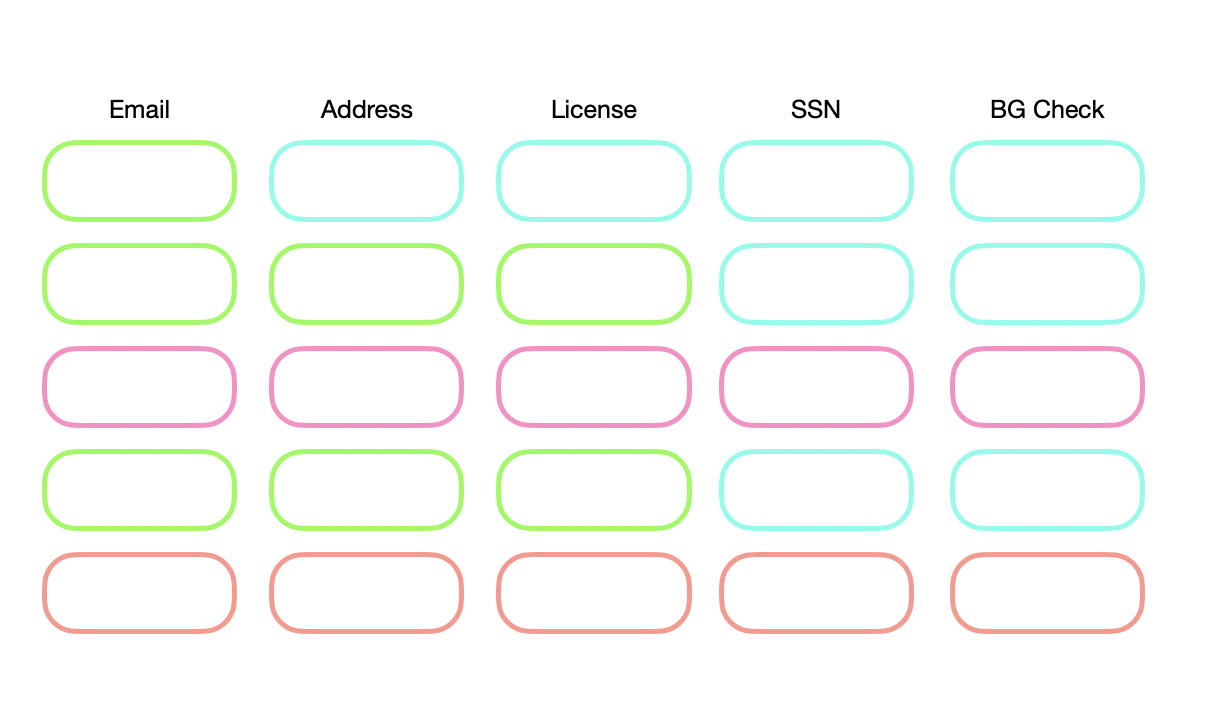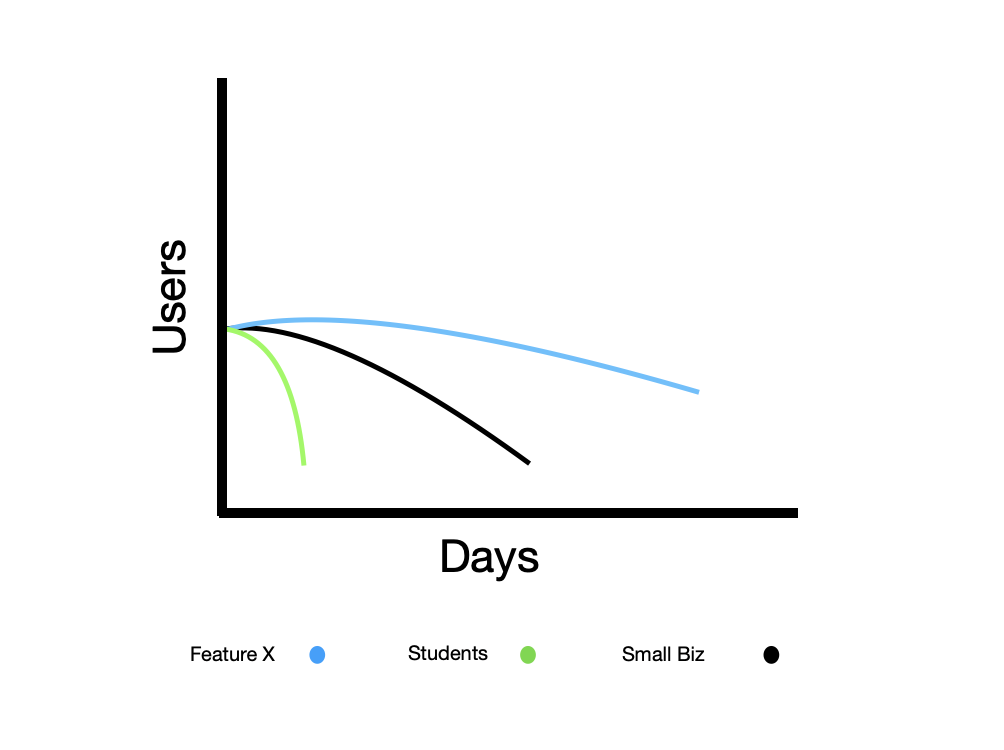Don’t reinvent the growth funnel.
There’s more than a decade of growth marketing now behind us. Thousands of startups have experimented with infinite variations and tweaks to their growth funnel, so why should you try to reinvent the same foundation?
The most important aspects are acquisition, activation and retention. While referral and monetization are also quite important, they won’t make or break a startup like those first three. If you can’t acquire, activate or retain consumers to your startup, your probability of success is practically nil.
In this article I will walk you through world-class setups from several leading companies, broken down by each stage of the funnel, so that you can draw inspiration from what has already been proven over the last decade.
This isn’t meant to be a teardown of each specific startup, but rather a holistic look into what leading companies are doing, their mindsets when it comes to growth and how to replicate these actions in your own startup.
Funnel stage I: Acquisition
Without question, the most advanced acquisition I personally encountered occurred while I was a leader of rider growth at Uber. As you can imagine, at that time we had swarms of product managers, data scientists and all the complementary growth roles you can think of helping us push our growth marketing team forward.
When building the correct approach for acquisition, these are the aspects that will elevate a world-class program above an average one:
- Attribution setup
- Mindset on metrics
- Focus on large levers
In terms of our attribution, I must begin by qualifying that I have never seen an attribution framework that was 100% accurate, as it is essentially impossible to capture all acquisition data without leakage.
At Uber we did still spend a great deal of time working with our attribution partners, such as our mobile measurement partner, and were constantly locating areas of improvement. Before unloading on your acquisition budget, you should first ensure you are capturing all possible data from your paid channels. If you’re acquiring on the web, this means adding UTM parameters to all campaigns.
Acquisition, activation and retention are critical. While referral and monetization are also quite important, they won’t make or break a startup.
Conversely, if you’re acquiring on a mobile app, this means having a mobile measurement partner fully integrated into your app. I’ve written an entire column on how to set up a proper tech stack that I implore readers to visit if they are starting their own attribution efforts from scratch.
Mindset on acquisition is what separates marketers flashing vanity metrics such as CTR and CVR, while simultaneously losing sight on down-funnel conversion metrics. At Uber, we focused on advanced metrics such as predicted LTV (pLTV) and predicted first trips (pFT) of new riders that we were acquiring in real time. Using methodologies we developed in-house that analyzed various data points, including acquisition channel and geography, we were able to accurately predict the number of trips a new user would make 90 days out.
Whatever your north star metric is, you should always be looking far into the future to understand the value of your acquisition so that you can double down on those channels that bring the highest-value consumers.
Acquisition is ever-changing and the best-in-class marketers work hard to stay in touch with the latest creative trends, new ad formats to test, and those next golden pockets to sell to. When I was on the growth team at Coinbase, we spent a minimum of 10% of our budget testing the new ad formats that TikTok was releasing.
The point here is that you should focus on the largest paid acquisition levers as they come to fruition, with one such example being creative on paid social. I recommend the following sites that keep startup founders up-to-date on the latest growth and marketing trends — SocialMediaToday for paid social or Search Engine Land for paid search.
Funnel stage II: Activation
The most extensive work I’ve seen on activation frequently comes from healthcare startups that need to understand the customers they’re onboarding in quite granular detail. From my experience, the following three factors separate world-class activation funnels from the rest:
- Understanding customers early
- Robust life cycle program
- Correct activation metric
Many startups have begun to realize that they need to customize experiences based on the information they gather about their customers early on. A couple of startups doing this well are Canva, Twitter and Noom. I purposefully chose various verticals to show that it can, and should, be done in the case of every startup. The most important takeaway from these companies is that they spend a great deal of time optimizing the questions they ask users to figure out which ones lead to the most positive first experiences.
Noom, a weight-loss startup, is notorious for their long onboarding process that asks an estimated 65 questions in a problem/solution format. This helps set their company up for success with activation now that they’ve collected all this information about their customers’ needs. If Noom knows that person X has challenges with Y conditions, the emails the company can send to person X can speak directly to their personal weight and health challenges and goals.
When it comes to your startup, ask questions whose answers can subsequently help you communicate with your customers in a more personalized way in the future.
This leads us to the second important facet to activation, which is a robust life cycle program. While testing various aspects of our driver growth at Postmates, we realized how important it was to have email sequences for each step of the onboarding funnel.
If we wanted to activate as many drivers to the platform as possible, we needed to have emails dedicated to alleviating concerns with drop-off at steps such as inputting driver’s license or SSN. Otherwise, we were leaving percentage points of conversion on the table by not speaking to the user’s concerns over submitting sensitive personal and financial information.
When thinking about activation at your startup, break it down into the following two pieces: What are your funnel drop-off points, and what style of messaging should you use based on each individual user?

Example funnel at Postmates with five emails per drop-off point. Image Credits: Jonathan Martinez
At Postmates, we used a variety of messaging tactics to navigate users through the funnel and complete their first drive. In the above example, the colors denote the messaging pillar:
- Green: Value props/Excitement
- Teal: Validity/Ease concerns
- Orange: Promotional
- Pink: Social proof
We needed to have much more “Validity/Ease concerns” style messaging for those steps where sensitive information was required, such as at driver’s license or SSN inputs. In contrast, we could spend more time educating potential drivers about the value and excitement of joining Postmates during the email input stage.
Outside of better understanding your customers on day one and crafting an engaging sequence of emails, it’s imperative to find the correct activation metric. Many startups experience failure at this point because they incorrectly assume that getting a user to install and use their product one time is activation. It’s not. For example, Facebook discovered early on that they needed to get new users to seven friends within 10 days. This became their true activation metric standard.
As you dig into the data on your product’s usage, look for patterns between those that stay engaged versus those that drop off. Are they using certain features? Do they come from an acquisition source that explains the product in more detail? Is there a specific amount of usage time in that first week?
Once you find out what sets your power users apart, then experiment with different methods to guide all new users into this more favorable statistical territory.
To ensure usage on your product, most of your efforts should be spent on the initial onboarding experience, such as having readily apparent videos or tooltips to entice use. Life cycle communication can also help bolster efforts by pointing to the advantages of specific features.
Funnel stage III: Retention
Amazon has mastered this growth stage with a stellar 98% year two retention rate on Prime. Outside of their compelling free two-day shipping offer with Prime, the global megacorporation is constantly adding new features to the subscription. As an example, Amazon recently signed a deal worth over $1 billion per year with the NFL to broadcast Thursday Night Football for Prime subscribers.
This speaks volumes because even an established player like Amazon with already stellar retention numbers is continuing to try and improve their offerings.
The primary takeaway here is that you should constantly be collecting feedback from your customers so that you can continue to improve on your provided value. If you haven’t already, set up an automated feedback form to send when customers are at different points of their journey: seven days, 30 days, 60 days, or 90 days. It’s important to understand what differentiates between those customers who have used your product minimally and those who use it regularly and exhaustively.
Surveys are great for gathering qualitative feedback, but it’s imperative to make sure you’re constantly mining your data for those hidden veins of gold. Leverage the data you have for every drop-off point to figure out how you can optimize further.
Spend the time to make sure your data is clean so that you can start creating dashboards to understand user behavior. Setting up business intelligence (BI) tools, such as Amplitude or Mixpanel, will make this process significantly easier. Instead of manually running SQL queries, you should spend your time on a BI tool slicing data in different ways to find patterns. Here are a few important slices of data you should have right away to improve user retention:
- By time (i.e., one-day, seven-day, 30-day, 60-day, etc.)
- By feature usage
- By customer persona
As an example, if you were to identify that your highest retaining users engaged with feature X of your product in the first session (one day), you may create a life cycle email series or tooltips in your product to guide users to that feature. At the same time, you have also discovered that students are users with poor retention rates.
With this information, you now face a choice of whether to experiment more to try to drive this group’s usage, or instead you could stop acquisition efforts for this segment altogether.

Simplified retention analysis by different segments. Image Credits: Jonathan Martinez
If you don’t have the time or expertise to create dashboards, I’d recommend you hire a data analyst or growth marketer with an underlying data skill set, to set up everything for you. There are various marketplaces, such as MarketerHire, where you can find this type of talent, or you can go poaching on LinkedIn to see if anyone is up for a project to help you in this area. The types of roles to search for are data analyst, product analyst, growth analyst and even data scientist.
What Duolingo and various games have mastered are perfectly timed notifications for every drop-off point, recency for drop-off and an understanding of what style of messaging to use based on the individual user. They’ve also implemented streaks to keep users coming back daily. For example, Farmville, a farm-based game that gained massive popularity on Facebook, famously sent notifications to users whenever their plants needed watering, which kept usage rates high. Find out what features you should continue highlighting by notifications and get your users returning for more.
There are a multitude of lessons that can be learned from world-class startups that are at the cutting edge of growth marketing. These startups are typically those that have the funding and the resources available to power through iteration after iteration of growth testing. Follow in their footsteps while forging your own parallel path to these startups, and you’ll be in great shape to upscale your own startup.
